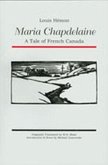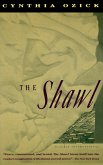Maria Chapdelaine, the quintessential novel of the rugged life of early French-Canadian colonists, is based on the author's experiences as a hired hand in the Saguenay-Lac-Saint-Jean area. A young woman living with her family on the Quebec frontier, Maria endures the hardships of isolation and climate. Maria must eventually choose between three suitors who represent very different ways of life: a trapper, a farmer, and a Parisian immigrant. Powerful in its simplicity, this novel captures the essence of faith and tenacity, the key ingredients of survivance. Translated into many languages, Maria Chapdelaine is enshrined as a classic of Canadian letters. A new introduction by Michael Gnarowski examines its relevance and provides insights into Louis Hemon's life. Louis Hemon was born in 1880 and was raised in Paris, where he qualified for the French Colonial Service. Unwilling to accept a posting to Africa, Hemon embarked on a career as a sports writer and moved to London. In 1911 he sailed for Quebec and was struck and killed by a train in Northern Ontario in 1913.
Hinweis: Dieser Artikel kann nur an eine deutsche Lieferadresse ausgeliefert werden.
Hinweis: Dieser Artikel kann nur an eine deutsche Lieferadresse ausgeliefert werden.








